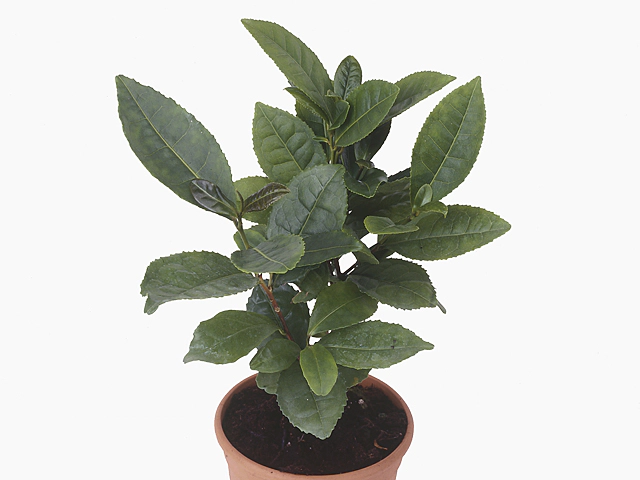Camellia sinensis

| Leaf tip | Acuminate |
| Leaf margin | Erose |
| Leaf, general shape | Elliptic / oval |
| Leaf size | 5 - 7,5 cm; 7,5 - 10 cm |
| Leaf, main color | Medium green |
| Leaf colour, pattern | Unicolored |
Camellia sinensis, commonly known as the tea plant or camellia, is a fascinating evergreen shrub that is cultivated worldwide for its leaves, which are used to produce various types of tea. The plant has several distinctive features that contribute to its allure, including its leaf tip, margin, general shape, size, and color.
The leaf tip of the Camellia sinensis plant is described as acuminate, which means it tapers to a pointed tip. This characteristic adds to the overall elegance and beauty of the plant. The leaf margin, on the other hand, is described as erose, which indicates a somewhat jagged and irregular edge, adding a touch of uniqueness to the foliage.
In terms of shape, the leaves of the Camellia sinensis plant are elliptic or oval, contributing to their aesthetic appeal. Their size can vary, with some leaves measuring around 5 to 7.5 cm, while others may reach up to 7.5 to 10 cm. The variation in leaf size adds to the diversity of the plant and may be influenced by a variety of factors, such as the specific cultivar or growing conditions.
When it comes to color, the leaves of the Camellia sinensis plant typically exhibit a medium green hue, providing a pleasant visual contrast against its surroundings. The unicolored pattern of the leaf color enhances the natural beauty of the plant, giving it a sense of uniformity and balance.
Aside from its ornamental value, Camellia sinensis is primarily cultivated for its leaves' utility in producing tea. The leaves undergo various processing methods such as withering, rolling, oxidizing, and drying to produce different types of tea, including green, black, oolong, and white teas. The specific characteristics of the leaves, such as their tip shape, margin, and color, can influence the flavor and aroma profiles of the resulting tea.
In addition to its cultural and economic significance as a tea-producing plant, Camellia sinensis also holds a place in traditional medicine. It is believed to possess several health benefits, primarily attributed to its high content of polyphenols, particularly catechins and flavonoids. These compounds are known for their antioxidant properties and potential positive effects on cardiovascular health, cognitive function, weight management, and more.
Camellia sinensis, with its acuminate leaf tips, erose margins, elliptic/oval shapes, varying sizes, and medium green unicolored patterns, is undoubtedly a captivating plant. Its multifaceted characteristics make it both visually appealing and nutritionally valuable. Whether enjoyed as a beverage or appreciated in a garden, this remarkable plant continues to play a significant role in our lives.
Market availability index by month:
| Jan. | Feb. | Mar. | Apr. | May | Jun. | Jul. | Aug. | Sep. | Oct. | Nov. | Dec. |
|---|---|---|---|---|---|---|---|---|---|---|---|
| 3 | 3 | 3 | 3 | 3 | 3 | 3 | 4 | 3 | 3 | 3 | 3 |